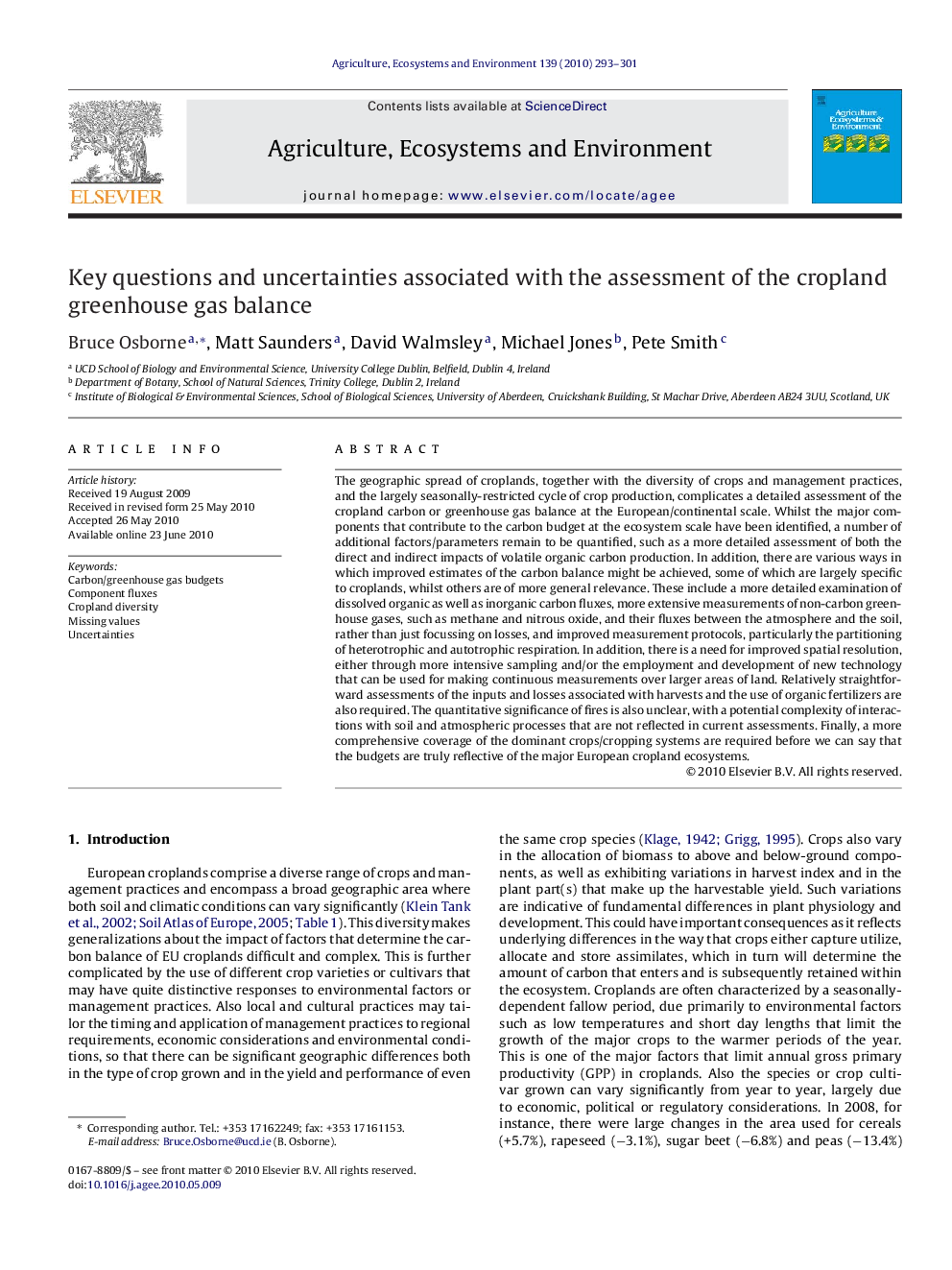| Article ID | Journal | Published Year | Pages | File Type |
|---|---|---|---|---|
| 2414851 | Agriculture, Ecosystems & Environment | 2010 | 9 Pages |
The geographic spread of croplands, together with the diversity of crops and management practices, and the largely seasonally-restricted cycle of crop production, complicates a detailed assessment of the cropland carbon or greenhouse gas balance at the European/continental scale. Whilst the major components that contribute to the carbon budget at the ecosystem scale have been identified, a number of additional factors/parameters remain to be quantified, such as a more detailed assessment of both the direct and indirect impacts of volatile organic carbon production. In addition, there are various ways in which improved estimates of the carbon balance might be achieved, some of which are largely specific to croplands, whilst others are of more general relevance. These include a more detailed examination of dissolved organic as well as inorganic carbon fluxes, more extensive measurements of non-carbon greenhouse gases, such as methane and nitrous oxide, and their fluxes between the atmosphere and the soil, rather than just focussing on losses, and improved measurement protocols, particularly the partitioning of heterotrophic and autotrophic respiration. In addition, there is a need for improved spatial resolution, either through more intensive sampling and/or the employment and development of new technology that can be used for making continuous measurements over larger areas of land. Relatively straightforward assessments of the inputs and losses associated with harvests and the use of organic fertilizers are also required. The quantitative significance of fires is also unclear, with a potential complexity of interactions with soil and atmospheric processes that are not reflected in current assessments. Finally, a more comprehensive coverage of the dominant crops/cropping systems are required before we can say that the budgets are truly reflective of the major European cropland ecosystems.
